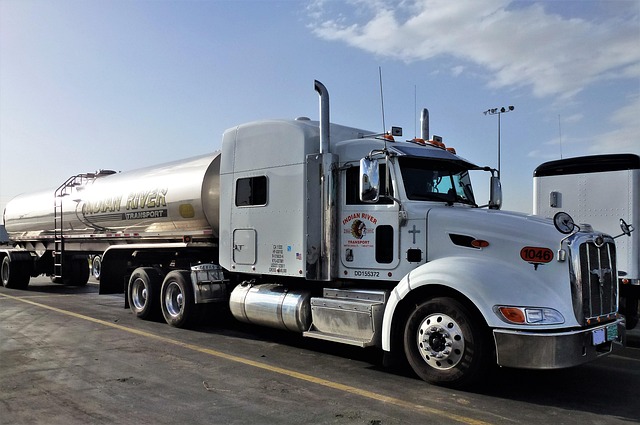Looking to register your car in California? This guide breaks down the process step-by-step, ensuring a smooth transition. First, understand the eligibility requirements for vehicle registration in California. Gather essential documents like proof of ownership and insurance. Next, visit a DMV office or use a dmv vin verifier online. Double-check your Vehicle Identification Number (VIN) accuracy, as it’s crucial for verification. Finally, pay the registration fees and receive your official license plate.
- Understand Eligibility for Car Registration in California
- Gather Necessary Documents for Vehicle Registration
- Visit the DMV: Steps for Registering Your Car
- Verify Vehicle Identification Number (VIN) Accuracy
- Pay Registration Fees and Receive Your Plate
Understand Eligibility for Car Registration in California

Before you begin the registration process, it’s crucial to understand if your vehicle is eligible for registration in California. The state Department of Motor Vehicles (DMV) has specific requirements that must be met. One key step is ensuring the car has a valid Vehicle Identification Number (VIN) and passing a mobile vin verification or inspection to confirm its authenticity and history.
The DMV uses the VIN as a unique identifier for each vehicle, which helps in cross-referencing with national databases to check for any outstanding issues like theft, salvage, or outstanding loans. A legitimate VIN is essential, and you can often verify it through a mobile vin verifier or inspection service to streamline the registration process.
Gather Necessary Documents for Vehicle Registration

Before you start the registration process, ensure you have all the required documents ready. The California Department of Motor Vehicles (DMV) requires a variety of paperwork to verify your vehicle’s identity and your eligibility to register it. One crucial document is the Vehicle Identification Number (VIN) verifier, which can be obtained through a DMV inspection or a mobile VIN verification service. This unique 17-character code is essential for identifying your car accurately.
Additionally, you’ll need proof of ownership, typically a title document; valid identification, such as a driver’s license; and payment for the registration fee. For a seamless process, consider utilizing mobile VIN inspection services that can provide instant verifications, ensuring all details are accurate before heading to the DMV.
Visit the DMV: Steps for Registering Your Car

To begin the process of registering your car in California, visit your local Department of Motor Vehicles (DMV) office. This is a crucial step that cannot be skipped. At the DMV, you’ll need to provide several key documents and undergo a vehicle inspection, which includes a vin inspection. The DMV vin verifier plays a vital role here as it helps cross-reference your car’s unique Vehicle Identification Number (VIN) against their records to ensure the vehicle is safe for road use.
During this visit, expect to fill out necessary forms, pay registration fees, and have your vehicle’s title transferred from the seller to you. A mobile vin inspection isn’t typically required, but it can save time if you’re registering a car that’s been recently purchased outside of California. This streamlined process ensures that all vehicles on California roads meet safety standards, so remember to bring along all the necessary paperwork for a smooth and efficient registration experience.
Verify Vehicle Identification Number (VIN) Accuracy

Before initiating the registration process, ensuring your Vehicle Identification Number (VIN) is accurate is paramount. A correct VIN is essential for identifying your vehicle uniquely and accessing its historical data, which is crucial during registration at the California Department of Motor Vehicles (DMV). Many individuals opt for a mobile vin inspection or mobile vin verification service to cross-check this information before proceeding with registration.
Using a dmv vin verifier, whether through an official channel or a reputable third-party provider, helps avoid mistakes and potential delays during the car registration process in California. This step is particularly vital when purchasing a used vehicle, as the VIN can be easily altered, potentially leading to legal issues down the line.
Pay Registration Fees and Receive Your Plate

After submitting your application and necessary documents to the DMV, the next step is to pay the registration fees. These fees vary based on the type of vehicle and its age. You can typically pay online, by phone, or in person at a local DMV office. Once your payment is processed, you’ll receive your vehicle’s license plate. The California DMV offers various methods for plate delivery, including mail or a mobile vin verification service where they’ll install the plates at your location.
For convenience, some individuals opt for mobile vin inspection services that come to them. These services utilize advanced technology to perform a vin inspection and ensure everything is in order before issuing the license plate. This alternative approach can save time and effort, especially if you’re busy or unable to visit a DMV office.
Registering a car in California involves several straightforward steps, from confirming your vehicle’s eligibility to paying registration fees. By gathering the required documents, visiting a DMV office, verifying your Vehicle Identification Number (VIN) with a trusted VIN verifier, and completing the payment process, you can ensure your vehicle is legally registered and ready to hit the road. Remember to keep your registration up-to-date for smooth driving in the Golden State.



